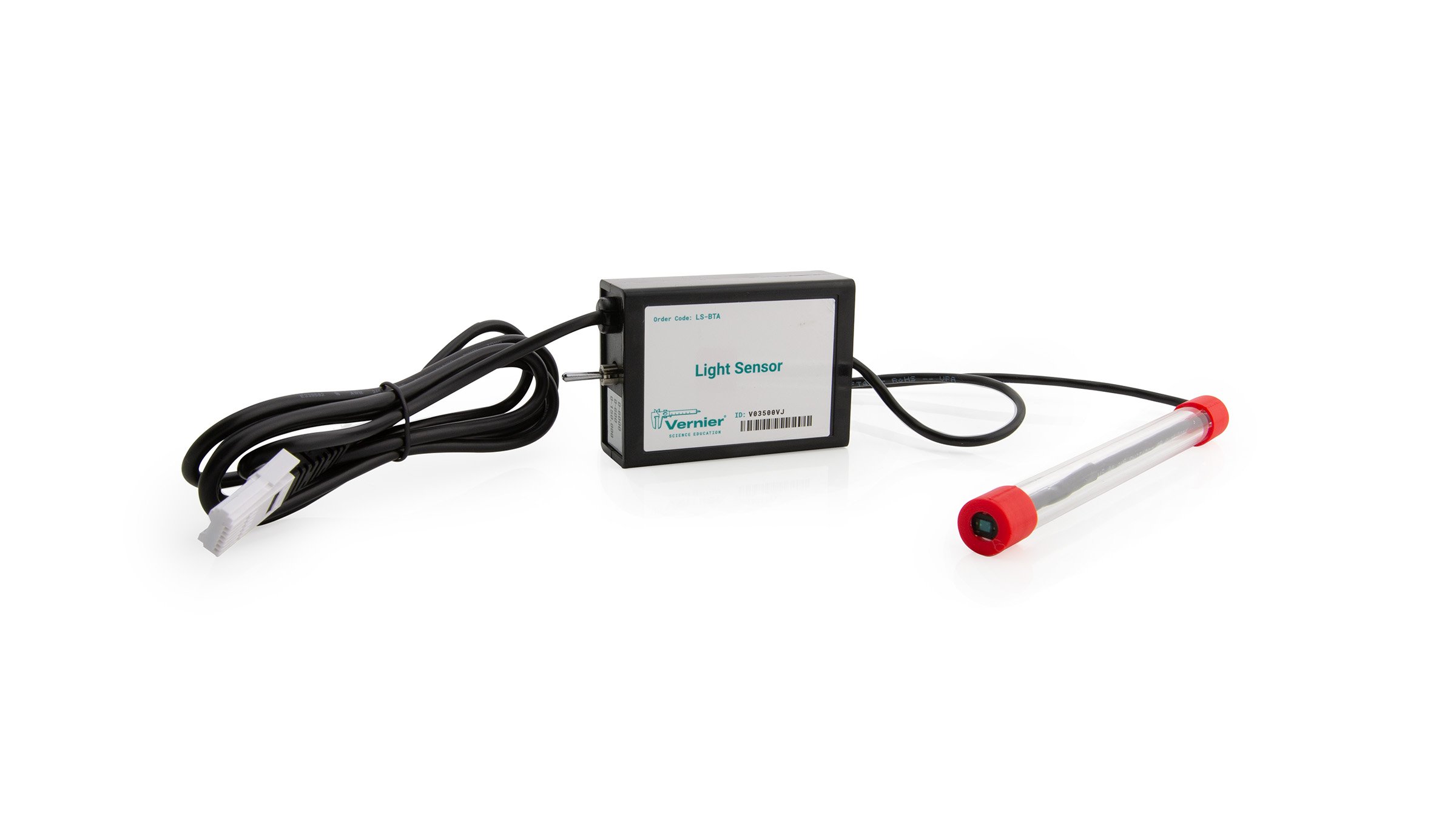Troubleshooting
- Primary Test: Make sure that the sensor is not picking up the 60 or 120 Hz flicker from fluorescent or other lamps. Eliminate all artificial light sources (except battery powered flashlights) and try your experiment.
- Secondary Test: Test the Light Sensor positioned as you plan to use it. Set the sampling at 1000 points/second for 0.1 second. If the flicker is the problem, you will see a drastic variation in the light intensity with a period of 60 or 120 Hz (50 or 100 Hz outside North America).
- Tertiary Test: Set the sample rate to a number that is not a factor of 60. For example, using 30, 20, or 10 samples/s is worse than using 17, 23, 27 samples/s.
Additional Troubleshooting
- The Light Sensor reading fluctuates, but the light appears steady.
- Light Sensor label has wrong range and incorrect units.
- Can I use a Vernier light sensors to measure PAR?
- What is the conversion from lux to W/cm2 ?
- How do I attach my light sensor to the Optics Bench
Specifications
- Resolution
⚬ 0–600 lux: 0.2 lux
⚬ 0–6000 lux: 2 lux
⚬ 0–150000 lux: 50 lux - Wavelengths: 400–800 nm
- Diameter: ~14 mm OD
- Photosensitive area dimensions: 2.4 mm x 2.8 mm
Calibration
Calibrate? No. The sensor is set to the stored calibration before shipping. If you wish to calibrate the sensor, there are two options.
- One method requires a calibrated light meter and is similar to the procedure used to calibrate any other Vernier probe. See How do I calibrate my sensor?
- The other method requires no extra equipment and is based on the known sensitivity of the Light Sensor. See How do I calibrate the Light Sensor?
Related Products
- Go Direct® Light and Color Sensor (
GDX-LC )

